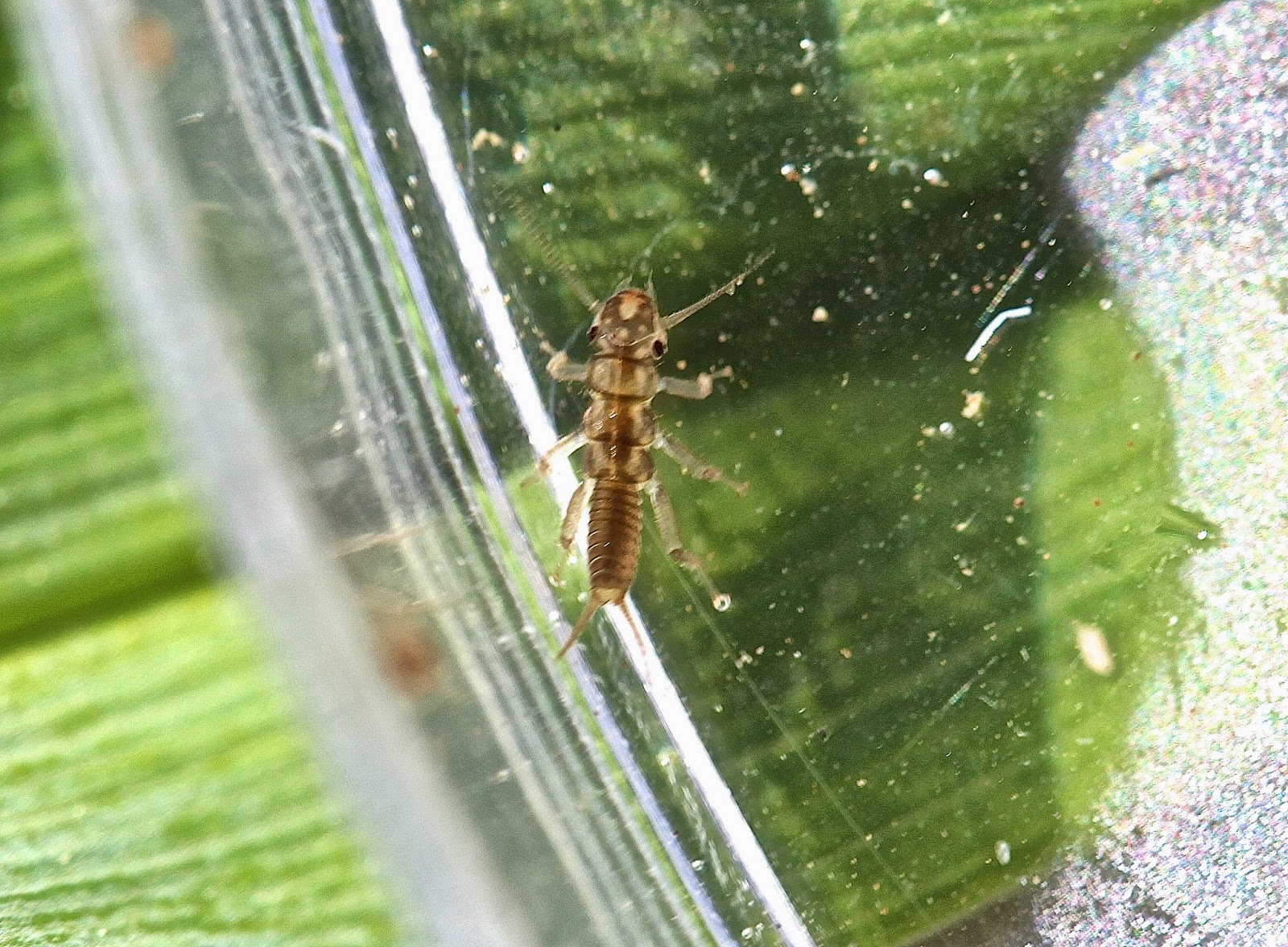I went to Buck Mt. Creek this morning hoping the water had dropped. It hadn't -- still high and a little off color. Nevertheless, I found a number of interesting things, and I wasn't sure what my focus should be. But let's start here.
The spiny crawler "explosion" that we see every spring has already begun. I saw large numbers of them this morning, and the leaves and grasses and root balls in the water will soon be absolutely crawling with spinys. The species we see in the spring is Ephemerella dorothea, but preceding them in a lot of our streams are the E. invaria nymphs -- which is what you see in the photo at the top of the page. The E. invarias are on the way out; the one in that photo is fully mature (black wing pads). It measured 9-10 mm. I photographed two of the E. dorotheas I found: they were only 5 mm.
If you monitor streams, your samples will soon be dominated by these spiny crawlers -- E. dorothea. E. dorothea, by the way, hatches as the "Eastern Pale Evening Dun (PED)"; E. invaria hatches as the "Eastern Sulphur Dun." (On mayfly hatches, see Knopp and Cormier's Mayflies: An Angler's Study of Trout Water Ephemeroptera.)
________________
Feature story number two: two more Isoperlas showed up for the spring. The first, a very tiny (3.5 mm) Isoperla holochlora.
And the other small Isoperla I found was the one I've been calling Isoperla nr. orata on which see the posting of 4/7/14. This measured ~ 5mm.
I knew what it was when I focussed in with my camera. Initially, again, I thought it was Isoperla montana/kirchneri of which I saw dozens this morning. This is I. montana/kirchneri, one that I found on 4/12/13 -- one year ago today.
Compare the patterns on the heads.
I. montana/kirchneri. Note how the gray bars behind the lateral ocelli extend fully to the back of the head. Also, the projections on the front on the dark transverse bar are relatively short.
I. nr. orata has a quite different look. Those projections are long, and the gray bars -- more like spots -- do not reach to the back of the head.
They differ in one other way. The paired black spots on the abdominal terga on I. montana/kirchneri -- these...
are missing from I. nr. orata. Just have to know what to look at.
________________
One other insect showed up for the first time. A small (4 mm) Nemourid, genus Amphinemura, the one with the frilly gills at its neck. I could see the gills clearly when the nymph turned on its side. This is the genus I'd like to get down to species.
And for beautiful insects, hard to beat this fairly mature Perlodid stonefly, Helopicus subvarians. Saw 4 or 5.
This nymph was probably ~ 20 mm. Note how H. subvarians dwarfs a typical I. montana/kirchneri Perlodid.
________________________
And farewell to Ephemerella invaria, at least in Buck Mt. Creek, for another year.

















No comments:
Post a Comment